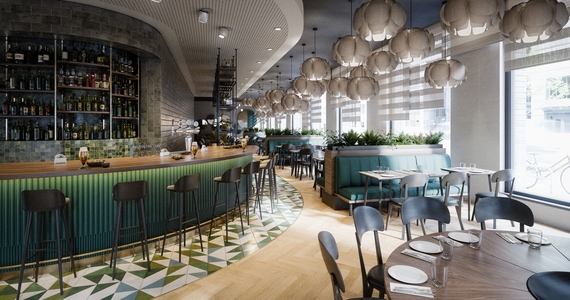Discover the best restaurants Lockhart has to offer for any taste.
Discover the best restaurants Lockhart has to offer for any taste.
Blog Article
Why Eating at Neighborhood Dining Establishments Supports Your Area and Delights Your Taste
Eating at regional restaurants uses greater than simply a meal; it works as a vital part in nurturing area vitality and economic strength. By patronizing these facilities, people not only delight in diverse cooking experiences but likewise contribute to regional job creation and the support of local farmers. This symbiotic connection fosters an abundant tapestry of flavors that mirrors regional society and heritage. Yet, the ramifications of such selections extend much beyond home plate, welcoming us to consider just how our eating behaviors shape the neighborhoods we live in. What might this imply for the future of neighborhood eating and community connection?
Financial Effect of Regional Eating

The economic impact of local dining extends far beyond the dining establishment itself, affecting a wide variety of fields within the neighborhood. Regional dining establishments play an essential duty in boosting financial growth by developing work, sustaining regional distributors, and adding to community revenues. When customers pick to eat at neighborhood facilities, they help endure work for cooks, servers, and upkeep team, therefore enhancing the local job market.
Moreover, local dining establishments usually source active ingredients from neighboring farms and producers, fostering a durable supply chain that profits different farming fields. This technique not just sustains regional economic situations but likewise motivates sustainable farming techniques. Furthermore, the sales tax created from these dining establishments adds to crucial civil services, such as education and learning and framework, which additionally boosts area lifestyle.
Additionally, neighborhood dining facilities commonly cultivate a feeling of community, drawing in residents and site visitors alike, which can result in increased foot website traffic in surrounding services. This interconnectivity among regional business improves financial resilience, creating a vivid and sustainable neighborhood ecosystem. Fundamentally, the assistance of regional dining is a financial investment in the broader financial wellness of the area, advertising growth and sustainability for future generations.
Distinct Cooking Experiences

Additionally, many local establishments welcome farm-to-table practices, stressing the value of seasonal fruit and vegetables. Diners can relish the quality of components sourced from neighboring farms, which not just enhances taste but likewise cultivates a link to the local landscape. This dedication to high quality and area establishes the phase for distinctive culinary experiences that are frequently lacking in chain dining establishments.
Moreover, regional cooks regularly experiment with blend food, mixing varied cooking traditions to develop amazing brand-new meals. Such technology not just entices the taste however likewise motivates adventurous dining, inviting patrons to widen their cooking horizons. Involving with neighborhood restaurants allows diners to appreciate dishes that are not nearly nutrition, yet regarding the artistry and interest that define the culinary globe, making every dining experience truly one-of-a-kind and delightful.
Strengthening Community Bonds
Eating at regional restaurants plays a critical role in strengthening community bonds by promoting connections among locals. These establishments act as crucial gathering areas where individuals can engage in significant discussions, share experiences, and produce long-term memories. As clients regular the same neighborhood areas, they grow a sense of familiarity and camaraderie, enhancing social connections within the community.
In addition, local dining establishments commonly reflect the one-of-a-kind cultural material of their areas, showcasing regional practices and culinary heritage. This event of local culture not just enhances neighborhood identity however also encourages residents to take pride find out here now in their environments. By taking part in the local dining scene, individuals add to a common narrative that binds them together.
Community occasions hosted at restaurants, such as open mic evenings, charity events, or food festivals, further boost these connections. They supply opportunities for partnership and engagement amongst click this link diverse groups, promoting inclusivity and understanding. As citizens collect to support neighborhood businesses, they at the same time support each other, creating an interconnected network that enhances the neighborhood's strength.
Fundamentally, dining at local dining establishments is not just concerning food; it is an enriching experience that fortifies community bonds and grows a vibrant, united local culture.
Supporting Local Farmers and Producers

This method minimizes transport prices and emissions, promoting environmental sustainability while additionally boosting the taste and top quality of the recipes served. Seasonal menus, which highlight regional produce, enable dining establishments to use one-of-a-kind cooking experiences that show the region's agricultural bounty.
Furthermore, supporting local farmers aids preserve conventional farming methods and motivates biodiversity. It empowers small-scale manufacturers, permitting them to flourish in a progressively industrialized food system. As regional restaurants choose to partner with these farmers, they assist keep a vivid farming neighborhood, making sure that regional food systems continue to be resistant.
Basically, dining at local dining establishments is not just concerning delighting in a meal; it is a financial investment in the regional economic climate and an affirmation of sustainable techniques. By picking neighborhood, diners play a vital function in nurturing their communities and sustaining the diligent check here individuals who grow their food.
Protecting Local Culture and Heritage
Rooted in the traditions of their areas, regional restaurants function as crucial custodians of cultural heritage. By showcasing regional active ingredients and conventional food preparation techniques, these establishments maintain the distinctive tastes and culinary techniques that specify regional identity. Each recipe narrates, mirroring historical influences and social stories that have actually formed the community over generations.
Moreover, local restaurants often promote time-honored dishes passed down through family members, making sure that one-of-a-kind cultural methods stay active. This not only informs customers concerning the neighborhood's heritage however also promotes a sense of pride and belonging amongst homeowners. The ambience, design, and even songs in these facilities commonly echo the neighborhood society, providing an alternative experience that transcends plain dining.
Moreover, regional restaurants contribute to the conservation of language and dialects, as food selections and discussions typically include local vernacular. By taking part in neighborhood events and events, these restaurants reinforce social bonds and advertise social exchange. Basically, dining at neighborhood dining establishments is not merely a culinary experience; it is a chance to involve with and support the abundant tapestry of neighborhood culture and heritage, ensuring its continuity for future generations.
Final Thought

Report this page